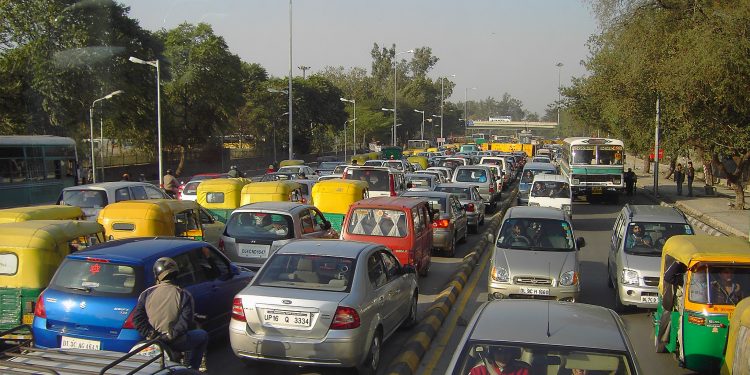The Odd-Even Plan: Need of The Hour

The rapidly increasing air pollution in Delhi and the increasing number of vehicles have opened the eyes of the Delhi Government to suppress these much worrying problems. The Delhi Government has thus come up with the Odd-Even plan, which aims to restrict the number of vehicles on the road every day.
What is The Odd-Even Plan?
Under the odd-even plan, private vehicles with odd and even registration numbers will be allowed on the roads of the national capital only on alternate days. This means that on one day only the private vehicles with odd registration numbers will be allowed on the roads and on the other day private vehicles with only even registration numbers will be allowed. However, this rule will not apply to the public vehicles. This method is usually known by the name ‘road space rationing’ and is being followed in many countries around the globe. The plan will function from January 1, 2016 to January 15, 2016 to test its feasibility.
Why is it Needed?
The significantly increasing air pollution in Delhi has left the Delhi Government with no choice but to come up with a solution that would curb this menace. As a result, the AAP Government in Delhi has come up with the Odd-Even plan. A recent study conducted by the University of Surrey in the United Kingdom reveals that Delhi is the most polluted city in the world. Also, the rapidly increasing number of vehicles in Delhi has immensely congested the roads of the city. There is hardly any space for parking the vehicles and a very negligible and a rather life-threatening space for the pedestrians. This plan aims to tackle both these issues.
Is This Plan Feasible?
Given the humongous amount of vehicles, this system seems difficult to be implemented. Also, the public transport in Delhi is not so effective to cater to the large population of Delhi. The implementation of this plan implies keeping off the roads almost 10 lakhs vehicles every day. The residents of Delhi who almost every day head out to their workplaces in their own vehicles would find it difficult to linger on the roads to board the public transport. However, the plan has proved to be successful in many countries and if implemented systematically and in a planned manner it might prove to be a success in Delhi as well.
How to Implement it Effectively?
What is being regularly questioned and debated is the implementation of this plan. The implementation of this plan is a tedious and arduous task. Certain things need to be changed, rather improved for this plan to function smoothly and effectively. The most important of these things is the ‘Public Transport’. When the people are not allowed to bring their vehicles on roads, they have no choice but to resort to the public transport. Presently, the public transport system in Delhi is not effective and cannot cater to the humongous population of the capital city. It does not function 24×7, which can prove to be a difficulty for the residents working late nights. Also, given the past events related to the public transport, it is in no way safe for travelling at night, especially for the girls (for the girls it’s not even safe during the day time!). The public transport system of Delhi needs a dramatic change to ensure a seamless functioning of the odd-even plan.
Vehicles Exempted From This Plan
The CM of Delhi recently announced a list of 20 categories of vehicles that would be exempt from being banned under this plan. These include all two-wheelers, CNG vehicles which will have to display the certificate, electric vehicles and hybrid vehicles, women; women drivers with a male child up to the age of 12, Vehicles of the President, Vice President, Prime Minister, Speaker of Lok Sabha, Deputy Chairman of Rajya Sabha, Deputy Speaker of Lok Sabha, Governors of states/ Lt Governor, Chief Justice of India, Union Ministers, Leaders of Opposition in Rajya Sabha and Lok Sabha, Chief Ministers of states except Delhi, judges of Supreme Court and High Court, Lokayukta, Emergency vehicles, ambulance, fire, hospital, prison, hearse, enforcement vehicles, Vehicles of paramilitary forces, Ministry of Defence, pilot and escort, Vehicles of SPG protectees, Vehicles bearing diplomatic corps registration numbers. Also, the vehicles of those on way to hospital for a medical emergency (with a proof) and vehicles of the physically challenged have been exempted.
Conclusion
The solution provided by the Delhi Government in the form of the Odd-Even plan seems to be a level-headed step and need of the hour. But the success of this plan rests on its implementation which might prove to be troublesome, given the number of vehicles in Delhi and the not so effective public transport in Delhi. If implemented with proper planning and systematic manner, the plan might prove to be successful and could help in curbing the pollution menace in Delhi.
[Image Attribute: denisbin ]




